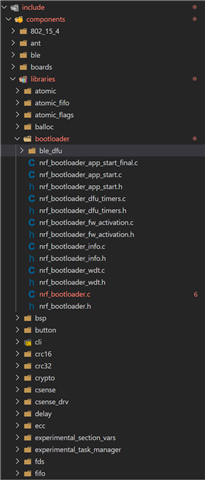Hello,
Im working on a project that will require us to be able to update the nrf52 (which is providing BLE services to a host MCU) via a custom over-the-air update mechanism. We already have PCBs being produced with the nrf52 on them (so this is not a dedicated development kit). I am wondering how we can do the following:
1) Install the DFU bootloader onto the nrf52
2) Activate the bootloader so that we can begin the DFU process. I would prefer if we could trigger this externally so the host MCU can start an upgrade without having to rely on software on the nrf52.
Thank you very much for any help.



